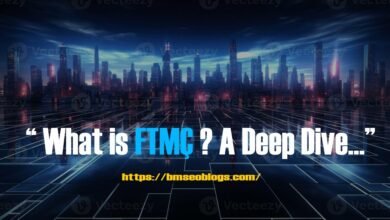Empowering Employee Development through Performance Management

Employee development is a critical component of an organization’s success. Through strategic performance management, companies can cultivate a skilled and competent workforce that is highly motivated and engaged. Well-defined career development paths increase output and enable staff members to fulfill their professional aspirations while working for the company.
Understanding the Importance of Employee Development
According to an article, many organizations acknowledge that investing in employee development is a surefire way to attract and retain top talent. Moreover, this investment reduces the likelihood of skill shortages within the company in the long run.
A robust performance management system facilitates regular feedback and goal-setting, essential to employee growth. This approach ensures that professional development aligns with organizational objectives, creating a win-win situation for employers and employees.
Crafting Effective Professional Development Plans
Professional development plans are at the heart of employee growth strategies. These personalized plans involve setting specific, measurable, achievable, relevant, and time-bound (SMART) goals. Management and employees working together to determine the skills and abilities needed for career advancement are critical to the success of these programs.
To create an effective plan, it is crucial to assess employees’ current performance levels and identify gaps in skill sets. Tools such as competency assessment worksheets can aid in this process. Once areas for development have been pinpointed, managers and employees can co-create a roadmap that aligns with personal aspirations and the company’s strategic direction.
Professional development should not be a one-size-fits-all approach; instead, it should consider each employee’s unique strengths and interests. Additionally, monitoring progress and providing ongoing feedback is critical for the evolution and refinement of the development plan.
Leveraging Feedback for Continuous Improvement
The foundation of performance management’s ongoing improvement is feedback. Constructive and timely feedback allows employees to understand what they are doing well and where there is room for improvement. Feedback should be honest, specific, and oriented toward behavior and development rather than personality to be effective.
Fostering an environment of transparent communication motivates staff members to seek out feedback actively. It fosters a growth mindset and builds trust between employees and management. The results can include higher morale, better performance, and increased retention rates.
Organizations that integrate feedback into their daily operations keeping it separate from annual evaluations, enable employees to adapt and grow in real time. Encouraging peer-to-peer feedback can also create a supportive work environment where employees learn from one another and hold each other accountable for their development.
Incorporating Training and Learning Opportunities
Continuous learning is vital for sustained employee growth and organizational competitiveness. People have different learning styles. A mix of on-the-job training, mentoring, workshops, and e-learning can meet their needs. Companies should prioritize investing in learning management systems. They should also invest in professional development programs to support these opportunities.
Encouraging employees to pursue certifications or continuing education can also boost their skills. It provides them with the tools needed to excel in their roles. Technology platforms, webinars, and conferences can also provide relevant insights. They can provide learning experiences that contribute to employee development.
By cross-training and rotation, staff may understand more about the company. They can also expand their skills. These programs promote flexibility and adaptability. The modern business world prizes these traits.
Setting Goals Aligned with Organizational Vision
Employee development goals must dovetail with the organization’s long-term vision and strategic direction. Employees are more driven and dedicated to their professional development when they see the connection between their personal development and the firm’s success.
Regularly revisiting and updating these goals helps to maintain alignment with shifting company priorities. Transparent communication around company vision and objectives also empowers employees to align their development plans with the current and future needs of the organization.
Leadership is essential in instilling their staff the values and dedication to personal and professional growth they want. When leaders actively invest in their development, they send a clear message about the value the organization places on growth and learning.
The Role of Technology in Performance Management
Technology has revolutionized how we conduct performance management. Digital tools and platforms make it easier to track progress. They also streamline feedback and provide access to many online resources.
Also, full performance management solutions allow for better data analysis. They also aid in decision-making to support and drive employee development. They can identify trends, strengths, and areas for improvement in the workforce. This enables a more strategic approach to development.
Picking, scalable technology is critical. It must meet the organization’s unique demands when supporting performance management. Integrating technology can create a more engaging and personalized employee development experience.
Building a Culture of Recognition and Reward
Acknowledgment and recognition are significant drivers of employee engagement and motivation. Employees who feel their efforts are noticed are more likely to be committed to their career development and the organization’s success.
Rewarding achievements and milestones within the development journey fosters a positive workplace environment and reinforces the behaviors aligned with company goals. These rewards can range from public recognition to promotions and financial incentives.
In addition to drawing top talent, a culture that supports and encourages ongoing learning and growth will motivate current staff members to pursue new career goals.
The Path to Growth and Success
Employee development through performance management is an ongoing journey that requires commitment and strategic planning. Enterprises that foster a culture of growth, provide learning resources, and integrate consistent feedback and recognition mechanisms will ultimately build a more skilled, engaged, and loyal workforce.
As the business environment continues to evolve, so must the strategies for employee development. By keeping a finger on the pulse of industry trends and adapting development strategies accordingly, organizations can ensure that they and their employees are prepared for the future.
Conclusion
In conclusion, Performance management encompasses more than simply assessments; it also involves fostering an atmosphere that allows workers to reach their maximum potential and flourish. It is this holistic approach that will lead to long-term growth and success for individuals and the organization as a whole.




